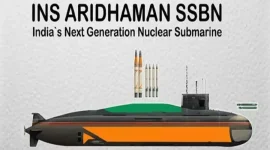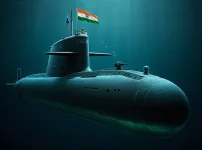- Views: 3K
- Replies: 24

India's naval strength is set for a significant boost with the development of its next-generation ballistic missile submarines (SSBNs), the S5 class.
These submarines are poised to dramatically enhance the country's nuclear deterrence capabilities, marking a substantial leap forward in firepower and technological sophistication.
The S5 class SSBNs are anticipated to feature a remarkable 12 or more launch tubes, a considerable upgrade from the current Arihant-class submarines, which possess only 4.
This expanded capacity will enable India to deploy a more formidable arsenal of K5 and K5 SLBMs, which are currently in the development phase. These missiles are designed to carry multiple nuclear warheads across vast distances, providing India with a potent and credible nuclear deterrent.
Furthermore, the S5 class submarines will incorporate a series of technological advancements to enhance their stealth and survivability.
Equipped with a new 190MW pressurized light-water reactor (PWR) fueled with enriched uranium, these submarines will boast a longer range and a quieter signature, making them significantly more difficult for adversaries to detect and track.
The increased size and advanced propulsion systems of the S5 class submarines will grant them greater operational freedom in the vast expanses of the Indian Ocean and Pacific Ocean regions.
This will ensure that India maintains its nuclear triad, consisting of land-based, sea-based, and air-based nuclear delivery systems, which is considered vital for a robust and credible nuclear deterrent.
While the S4 and S4 Star submarines are already in the final stages of fitment, the S5 design phase is nearing completion, and the program is expected to receive official sanction soon.
This ambitious undertaking underscores India's commitment to maintaining a credible and effective nuclear deterrent in an increasingly complex geopolitical landscape.


